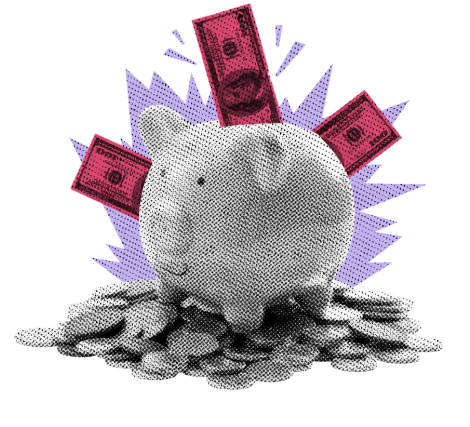The True Cost of Tariffs: Decoding Scott Bessent’s ‘One-Time Adjustment’

Stocks traded mostly higher yesterday as traders digested Trump’s first and notable trade saber-rattle with an Israel-Lebanon ceasefire providing some cushion. FOMC minutes show that the Fed is still on track to cut rates… slowly toward the unknown neutral rate… eventually. Housing prices continue to ascend, New Home Sales faltered in October as mortgage rates spiked, and Consumer Confidence crept higher this month.
The answer lies in the fine print. I was doing my usual sprint up Wall Street yesterday morning. Side note: if you are planning to visit New York, you must know that people walk fast, really fast, so what most people consider to be walking in NYC is actually a sprint for me. As I rounded that shallow curve of the street, my eyes focused on Trinity Church. It was a dreary, darkish morning, so the lights inside the church illuminated the reddish-stained glass windows that adorn its façade. Even the hardest Wall Street hardo cannot help but feel that there is something bigger calling the shots when witnessing that sight, and I am sure that I am not the first one to smile as I took in the image. As I was introspecting, I overtook an older couple and overheard the woman say, “what a beautiful church.” They were clearly tourists, and the view obviously affected them as well. I wanted to stop and tell them something, but I didn't. Why? Because it was sort of an “aha” moment for me. I was going to tell them that Alexander Hamilton was buried in the Trinity Churchyard. The “aha” was because I have been writing so much about the role and nominee for Treasury Secretary, and I forgot to mention that Alexander Hamilton was the first in the US, nominated by George Washington himself. He was the first Treasury Secretary to deal with a national debt! That debt was accumulated during the Revolutionary War. He was the first, and now 236 years later, Scott Bessent, if he gets confirmed, will find himself also dealing with the swelling national debt. Of course, back then, Hamilton only had to deal with a national debt of $77 million.
Before I go back to Bessent, I want to note that yesterday, President-elect Trump put forth two more appointments, Kevin Hassett as National Economic Council Director, and Jamieson Greer as Us Trade Representative. We will, I am sure get into both of them a great deal more in the days to come, but their announcements are a perfect jumping off point for this morning’s discussion. In his announcement, Trump said that Hasset “will play an important role in helping American families recover from inflation” through tax cuts, and that Greer would be instrumental in “reining in the Country’s massive trade deficit.” There is just so much to unpack there, but let’s talk about the high-level implications, starting with the trade deficit. It is true that the issue must be dealt with, however, it is the methods that has everyone worried about these days. Greer was an acolyte of Trump’s former trade rep Robert Lighthizer, so we can expect a similar agenda in a Trump 2.0 trade strategy. Regarding Hassett working on new tax cuts and renewal of old ones is OK, but it will, in fact, increase the budget deficit and ultimately cause more inflation. Should Greer champion aggressive tariffs, as is expected… well, we have covered this already, but, yes, indeed we can expect inflation, which would also confound the work of his colleague and coworker Kevin Hassett.
Now, I am sorry to do this, but I feel that it is important to address this issue once again, because it will affect you and me. In the midst of my normally chaotic but exciting day, I saw a clip of an interview with Scott Bessent. He said something like tariffs are not inflationary, likening them to “one-time price adjustments.” Ok, let’s address this issue… AGAIN. Do you know what the current rate of inflation is? Does it even matter to you as a consumer? Of course, it doesn’t. What matters to you is how much the items you wish to and need to purchase cost. How much is that house going for? What is the rent of that apartment? HOW MUCH for those eggs or that pound of chicken? What is that monthly healthcare insurance premium payment? Those are the things you are worried about. Sure, you want those price points to stop increasing, but your real challenge is paying for goods and services today. Wouldn’t you agree?
Inflation, my friends, is the rate of change of prices. When we say, “inflation is at 3%,” we mean that prices of goods and services is 3% more expensive now than they were a year ago. When we talk about “disinflation,” we are talking about a decrease in inflation, NOT prices. So, if inflation comes in at 2.3% this morning (as it is expected to), we can say that we experienced disinflation from where it was last year (2.95%). That is good, inflation, the rate of change in prices, is slowing. BUT prices themselves are still higher. Prices are not going down! Got it?
Now let’s go back to Bessent and his “one-time” assertion. He is technically correct that a 25% tariff on Canadian and Mexican imports would make everything coming from those countries cost us 25% more, in Bessent’s words, a one-time 25% adjustment. It may not have a lasting effect on inflation, the rate of change, but it will affect how much we pay for goods and services from Mexico and Canada going forward, until tariffs are lifted or modified. Now, is that good for you as a consumer? You don’t have to answer that question, it is rhetorical. My point here is this: don’t let anyone tell you that tariffs are not going to cost you anything. Don’t let anyone tell you that they are technically, not inflationary. They are technically not inflationary, now that you understand Bessent’s carefully crafted words. But wait, they may be. What if all those tariffs go into effect in February of 2025? Well, March 12th, when we get February’s CPI numbers, we can expect the year over year number to jump, reflecting the “one-time adjustment.” March’s CPI number will go back down. So, was it inflationary for just a month? If, so then, does that make it ok?
The US imports $476 billion from Mexico and $421 billion from Canada each year, representing one and three in the top US import partners. Will those tariff’s affect what you pay for many of the things that you buy every day? Likely. Now, it is important for you to understand that I am not saying that tariffs are the ultimate economic sin. On shoring production to the US can be very good for the US economy, and while tariffs may be a part of making that happen, they should not be taken lightly, nor should they be exacted with a mere flick of the pen without understanding the costs involved. Those costs will be born by consumers and US importers. Folks, this is a complex and contentious challenge, which is why so much of Wall Street is on edge when the topic comes up.
Do you want to know what Hamilton did to reduce the nation’s debts? Well, he introduced tariffs on imports to raise money to pay down those debts. 😮 Back in those days, tariffs were between 5% and 15%, but they got the job done, though Americans had to PAY more for their imported whiskey – you know, that one-time price adjustment. But wait, wouldn’t that cause price sensitive consumers to pick up a bottle of America made bourbon instead of imported Scotch whiskey? In doing so, didn’t that then support and prop up domestic business? So, the tariffs raised money, reduced debt, and supported local manufacturing. Seems like a winning strategy to me… as long as you read and understand the fine print. 😉
YESTERDAY’S MARKETS

NEXT UP
- Annualized Quarterly GDP (Q3) is expected to come in at 2.8% unrevised.
- Initial Jobless Claims (November 2023) is expected to come in at 215k, up slightly from last week’s 213k claims.
- Personal Income (October) is expected to have grown by 0.3%, same as the prior month.
- Personal Spending (October) is expected to have risen by 0.4%, slightly lower than September’s 0.5 gain.
- PCE Price Index (October) may have sped up (read the above description 😉) to 2.3% from 2.1%.
- Pending Home Sales(October) probably slipped by 2% after jumping by 7% in September.
- Markets are closed tomorrow for Thanksgiving but will be open on Friday. I will be back on Monday with my note along with your calendars for a week chock full of big releases. See you then!
.png)

